Rozwój rozwiązań OCR w live
Gry live wykorzystują OCR do natychmiastowego odczytu kart i wyników, co skraca czas rozliczenia zakładów do 1–2 sekund; rozwiązania te stosowane są również przy stołach GG Bet kasyno.
Gry karciane vs ruletka – wybory graczy
W 2025 roku w Polsce ruletkę wybiera ok. 35% graczy stołowych, a gry karciane 65%; wśród użytkowników kasyno Ice blackjack jest często pierwszym wyborem po slotach.
Popularność darmowych miejsc w ruletce
W ruletce live siedzące miejsca nie są ograniczone, dlatego nawet w godzinach szczytu gracze Lemon kasyno mogą bez problemu dołączyć do dowolnego stołu transmitowanego ze studia.
Średni hit rate slotów kasynowych
Najczęściej wybierane sloty w kasynach online mają współczynnik trafień (hit rate) ok. 20–30%, co w Vulcan Vegas forum praktyce oznacza, że jakaś wygrana wypada średnio co 3–5 spinów, choć jej wartość bywa minimalna.
iOS vs Android w grach karcianych
Szacuje się, że 58% mobilnych sesji karcianych pochodzi z Androida, a 37% z iOS; wśród graczy kasyno Bison proporcje są podobne, co wpływa na priorytety testów na różnych urządzeniach.
Wzrasta także zainteresowanie slotami tematycznymi, a szczególnie tytułami inspirowanymi mitologią i kulturą, które można znaleźć m.in. w Beep Beep, gdzie dostępne są liczne produkcje różnych producentów.
Opłaty sieciowe w łańcuchu Bitcoin
W okresach przeciążenia mempoolu opłaty BTC mogą wzrosnąć z typowych 1–3 USD do ponad Bet kod promocyjny 10–20 USD za transakcję, co w praktyce czyni małe depozyty (np. 20–30 USD) nieopłacalnymi dla graczy kasyn online.
Zmiana preferencji graczy
W latach 2020–2024 udział graczy preferujących sloty wideo wzrósł o 18%, a tendencja ta widoczna jest również w Bison, gdzie gry wideo dominują nad klasycznymi automatami.
Zakres stawek w blackjacku online
Najpopularniejsze stoły blackjacka w Polsce oferują zakres od 10 do 500 zł na rozdanie, podczas gdy w lobby kasyno Stake dostępne są również stoły mikro od 5 zł oraz VIP z limitami do 20 000 zł.
Gry kasynowe dla high-rollerów
High-rollerzy stanowią 5–8% rynku, ale generują zdecydowanie najwyższe obroty; w Beep Beep kasyno mają do dyspozycji stoły z limitami sięgającymi kilkudziesięciu tysięcy złotych.
Analiza łańcucha przez narzędzia AML
Firmy analityczne (np. Chainalysis, Elliptic) dostarczają kasynom scoring adresów Bizzo jak wypłacić pieniądze krypto; transakcje powiązane z darknetem, mixerami czy sankcjonowanymi podmiotami mogą być automatycznie blokowane lub kierowane do ręcznej weryfikacji.
Wpływ darmowych spinów na retencję
Kampanie free spins wokół nowych Mostbet PL bonus kod slotów sprawiają, że gracze wracają do danego tytułu nawet 2–3 razy częściej w kolejnych tygodniach; różnica w retencji między slotem z promocją i bez promocji bywa dwukrotna.
Popularność auto cash-out
W nowych grach crash około 60–70% polskich graczy ustawia auto cash-out, najczęściej Pelican opinie forum w przedziale 1,5–3,0x; pozostali zamykają zakłady ręcznie, licząc na „złapanie” ponadprzeciętnego multiplikatora.
Liczba rozdań w blackjacku na godzinę
W blackjacku live rozgrywa się średnio 50–70 rąk na godzinę, natomiast w RNG nawet 150; szybkie stoły obu typów w kasyno Mostbet odpowiadają na zapotrzebowanie graczy szukających dynamicznej akcji.
Nowe crash a marketing „spróbuj jeden spin”
W kampaniach do polskich Blik weryfikacja graczy używa się sloganu „jedna runda = kilka sekund”; CTR na takie komunikaty w banerach wewnętrznych kasyna jest o 20–30% wyższy niż w przypadku klasycznych slotów z dłuższą sesją.
Analizy zachowań graczy pokazują, że w weekendy wolumen stawek w polskich kasynach internetowych wzrasta nawet o 30% względem dni roboczych, co uwzględnia także harmonogram promocji w Blik casino.
Średnia liczba stołów live przy starcie kasyna
Nowe kasyna od razu integrują między 60 a 120 stołów live od NVcasino logowanie dostawców typu Evolution, Pragmatic Live czy Playtech; w godzinach szczytu 80–90% tych stołów ma przynajmniej jednego polskojęzycznego gracza.
Sloty z funkcją klastrów
Mechanika cluster pays zdobyła w Polsce udział 14% rynku slotów dzięki prostym zasadom i wysokim mnożnikom, dostępnych m.in. w katalogu Skrill casino.
Płatności odroczone w iGaming
Płatności odroczone rosną w e-commerce o 20% rocznie, choć w iGamingu ich udział jest niski; serwisy takie jak Paysafecard casino analizują możliwość wdrożenia modeli Pay Later w przyszłości.
Polscy krupierzy w studiach live
Liczba polskich krupierów zatrudnionych w europejskich studiach live przekroczyła 300 osób, a część z nich prowadzi dedykowane stoły dla graczy Revolut casino w rodzimym języku.
Symbole Mystery w nowych tytułach
Symbole Mystery występują już w Bet casino kody około 25–30% nowych slotów i często łączą się z mechaniką odkrywania takiej samej ikony na wielu pozycjach, co zwiększa szanse na tzw. full screen i mocne mnożniki.
Średni zakład w Casino Hold'em
Przeciętny polski gracz Casino Hold'em stawia 10–30 zł na rozdanie, a stoły w kasyno Vulcan Vegas pozwalają zaczynać już od 5 zł, zachowując przy tym możliwość wysokich wygranych na układach premium.
Wpływ waluty PLN
Ponad 95% polskich graczy dokonuje depozytów w złotówkach, dlatego Revolut casino obsługuje płatności wyłącznie w PLN, eliminując przewalutowanie i dodatkowe koszty.
Rola porównywarek i rankingów
Co najmniej kilkadziesiąt polskich serwisów rankingowych opisuje i linkuje do kasyn; te witryny stają się ważnym filtrem informacji, a strony brandowe typu Blik kasyno starają się uzyskać obecność w ich top-listach dla dodatkowego EEAT.
Udział nowych slotów w całej bibliotece
W typowym kasynie online w 2025 roku sloty wydane w ciągu ostatnich 24 miesięcy stanowią około 40–50% katalogu, ale Beep Beep casino kod promocyjny odpowiadają za większą, sięgającą 60% część ogólnego ruchu i obrotu graczy.
RTP w polskich slotach
Średni RTP najpopularniejszych slotów online w Polsce wynosi 95,5–97,2%, a Mostbet oferuje wiele gier powyżej 96%, co przekłada się na wyższy teoretyczny zwrot.
Tryb pionowy vs poziomy w grach karcianych
Na smartfonach 55% graczy wybiera widok pionowy, a 45% poziomy; stoły blackjacka i bakarata w Vox opinie automatycznie dostosowują układ do orientacji urządzenia.
Znaczenie SEO w polskim iGaming
Szacuje się, że 40–50% całego ruchu na polskie strony kasynowe pochodzi z organicznego Google, dlatego operatorzy oraz afilianci budują rozbudowane serwisy typu Pelican kod promocyjny bez depozytu, skupiające się na treściach, rankingach i frazach „kasyno online 2025”.
Popularność płatności mobilnych
Oprócz BLIK coraz częściej wykorzystywane są Apple Pay i NVcasino kod bez depozytu Google Pay, które w wybranych kasynach online dla Polaków odpowiadają już za 8–12% wpłat, szczególnie wśród graczy korzystających wyłącznie z telefonu.
Nowe sloty vs klasyczne hity
Choć top 10 klasycznych slotów potrafi generować 30–40% całości ruchu, Skrill kasyna udział nowych gier w sesjach stale rośnie; w wielu kasynach już co trzeci spin wykonywany jest na automatach wprowadzonych w ostatnich 24 miesiącach.
Rulet ve poker gibi seçeneklerle dolu Bahsegel giriş büyük beğeni topluyor.
Bahis dünyasında modern ve hızlı altyapısıyla öne çıkan Bahsegel kullanıcılarına fark yaratır.
It’s a destination that magnetises travellers through the power of one photo, from one particular angle. Do a Google image search of “Hallstatt” and you’ll notice that it’s one particular perspective, looking long across the length of the slender village, strung along a shoe-string peninsula, pricked by lofty church spires, that sings out loud. Wedged between the edge of Hallstatter See (Lake Hallstatt) and the towering Dachstein mountains, Austria’s oldest – and arguably most photographed village – hovered like a mirage, as I neared it. It is insanely quaint, achingly beautiful. So much that China, the world’s proven pros at the imitation game, have constructed a full-scale replica of Hallstatt village, complete with churches and frothing fountains, in Guangdong Province. Bless.
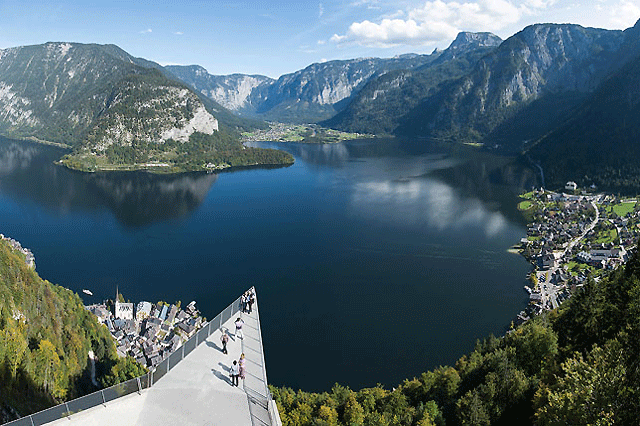
If you want to join the Instagram tribe and #bragtag about your visit to Hallstatt, by snapping that sought after money shot, it’s a surprisingly easy to jaunt to the specific location. The famous photo point is in the Römisches district, just a short ten minute walk away from the historic Market Square. After getting my pixel-fix for postcard-view perfection, I was equally transfixed by the flower-laden terraced cafes and 16th century Alpine houses, wrapped around the village lanes, that ensure no photo in Hallstatt is a poor one. Idyllically positioned on the southwest shore of glassy Lake Hallstatt and dwarfed by giant mountain ranges, this forbidding environment accentuates the supreme sense of seclusion. The village is home to just 800 residents. High above Hallstatt, in the upper valley, one of the greatest eye-openers was to take a journey back in time to the origin of salt production at Salzwelten.
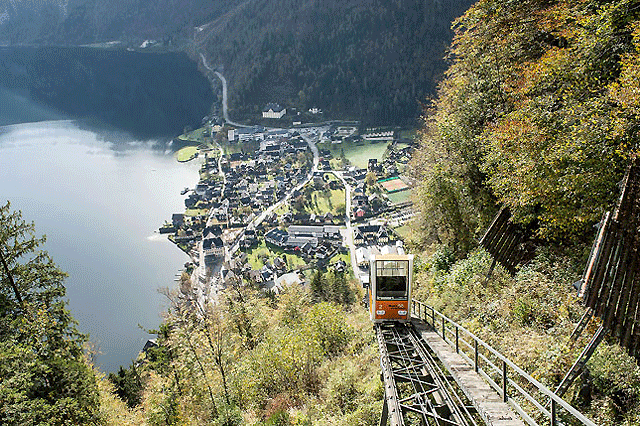
Hallstatt Salt World is situated high above the town on the 1,030-metre-tall Salzberg (Salt Mountain). You can access this remarkable attraction aboard a funicular. My first stop was at Rudolf’s Tower (Rudolfsturm), which serves up dreamy views from this old fortification, built over 700 years ago to defend the mines against invaders. It’s been joined by the Sky Walk, built 4 years ago, consisting of a sprawling platform that juts off the mountainside, with a sheer drop to the rooftops of Hallstatt, 350 metres directly below. The star attraction, however, is the 7,000-year-old salt mine itself. Yes, you read right. 7000 years! And it’s believed to be the world’s oldest salt mine, with archaeological evidence proving they were mining the salt from this mountain in 5000BC. Since salt is such an excellent preservative many of the early miner’s tools like pick axes and ladders, found within the mine, have withstood the ravages of time.
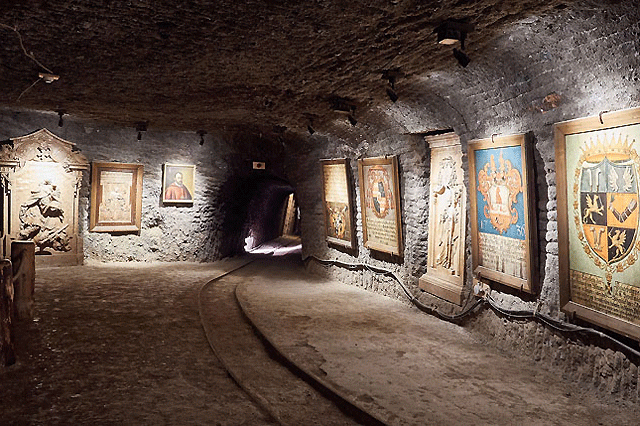
The earliest picks were made from deer antlers, which meant the salt was originally mined in the shape of hearts. By 800BC, the hardy miners were penetrating as deep as 200 metres into the mountain, carving out tunnels by hand, to reach the vast deposits of “white gold.” The greatest discovery to date was the ‘Man in Salt”, the corpse of an ancient miner, mummified in salt, who is believed to have perished during a major workplace accident in 1000BC. His preserved body was found in 1734 and he was laid to rest in the local graveyard, 2700 years after dying. Within the mine, I marvelled over the magnificently preserved wooden staircase that was built in 1344 BC! As you’d expect, this ancient salt mine is separated into different levels. The tourist experience takes you through two levels, using the wooden slides that the miners actually used on the job. Riding these 64-metre-long slides must have been the fun part to their daily toil.
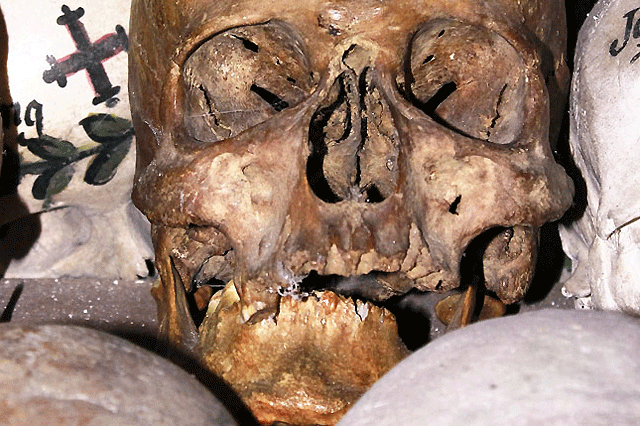
Back down in town, I paid to visit to St. Michael’s Chapel’s Bone House. Dating back to the 12th century, the rather macabre draw is the hundreds of artistically painted skulls on display. Skull painting was a quirky regional fad that became all the rage a couple of hundred years ago. The salt mine certainly ensured Hallstatt became a wealthy town, but the shortage of available land meant the graveyard was always in hot demand and after several years, an existing grave was reused for a new burial. The skull and bones were transferred to St. Michael’s for storage and the identity of the deceased family member was preserved by decorative paintings and inscriptions. Over 30,000 entries in the church death registry had been logged by 1900.
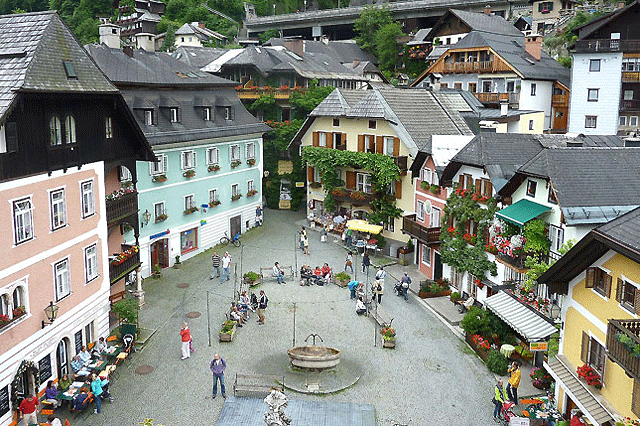
Given Hallstatt’s glorious sense of alpine isolation, the area is ripe with outdoorsy opportunities, if the weather is behaving. Backdropped by the Dachstein mountains, which is technically a massif, the peaks play host to skiers in winter and hikers in the warmer months. Some will take you up close to glaciers, including the stunning nature walk on the Echerntal Trail, which many a romantic poet and painter have swooned over. The mountains are also famous for the spectacular Dachstein Caves, a network of caverns up to 1,174 meters deep – some of the most impressive in the Eastern Alps. Highlights include the Giant Ice Cave with its wondrous caverns and frozen waterfalls (try to visit during one of its regular underground music concerts), and the Mammoth Cave (consisting of huge pipe-shaped galleries formed by an ancient underground river.
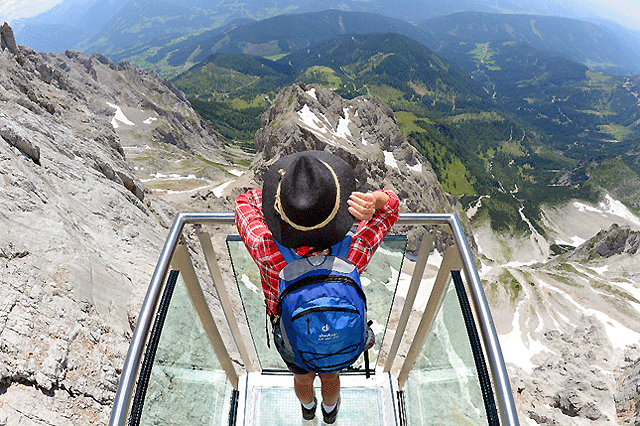
Other highlights are the panoramic viewing platforms, like 5 Fingers and the Stairway to Nothingness, jutting out from the rock face over with alpine vistas. At ground level, the World Heritage circular trail, wrapped around the shoreline of Lake Hallstatt is pure bliss. Getting to Hallstatt does take some effort, but if you’re staying in Vienna or Salzburg, even a quick day-trip is doable. It’s a two hour train ride from either destination. You can travel by bus, Postbus is the main operator, but the train ride is the better bet, because the pint-sized station above the lake is like a scene out of a storybook. And after alighting from the train, a waiting ferry will whisk you across the glassy waters to the mirage-like village, for just 5 Euro return. What a way to serenade your arrival into this true Austrian gem. www.raileurope.co.nz







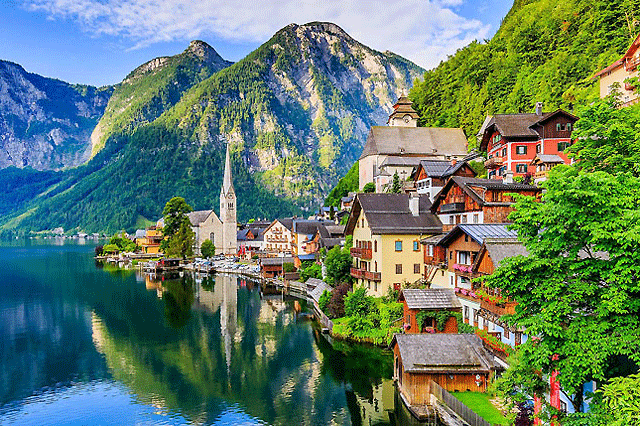
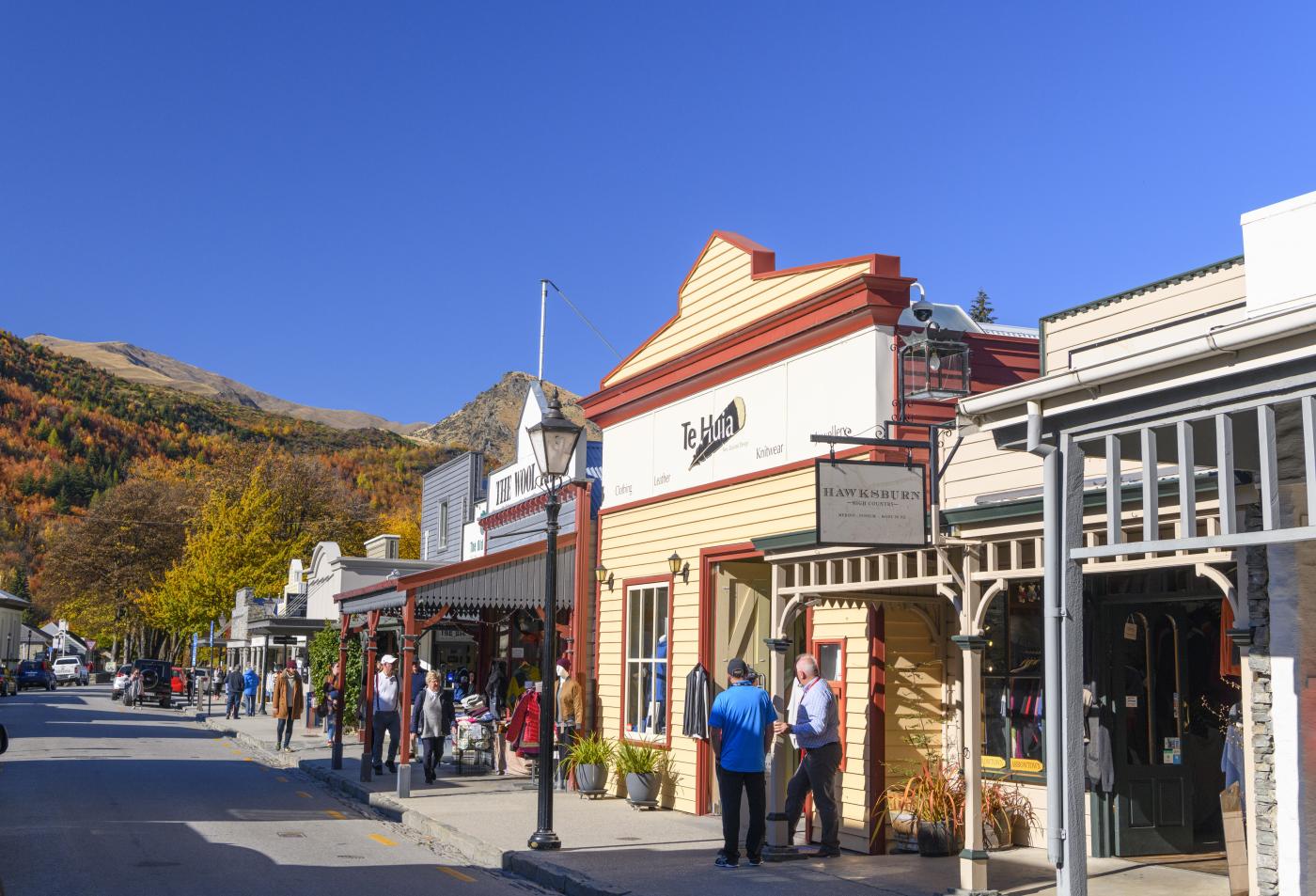



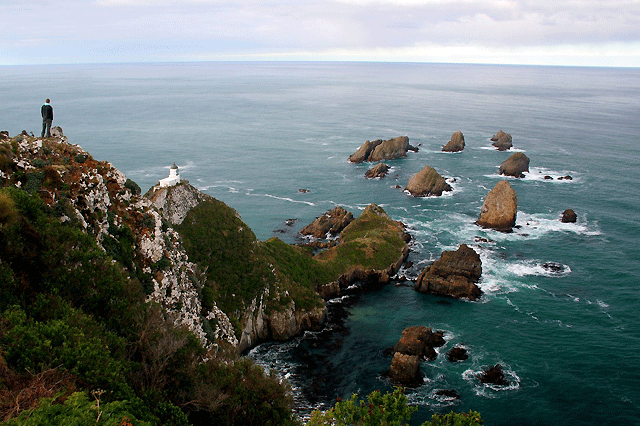
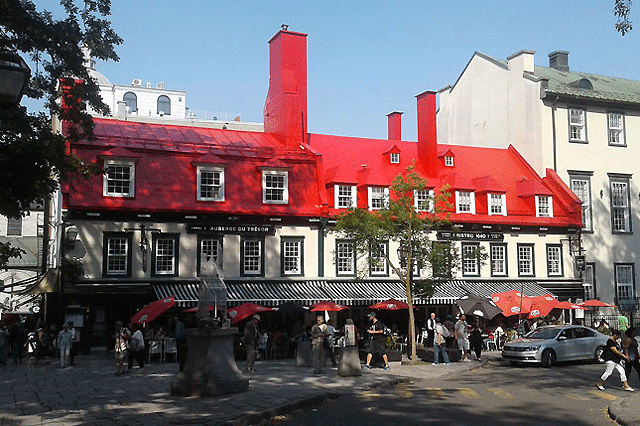
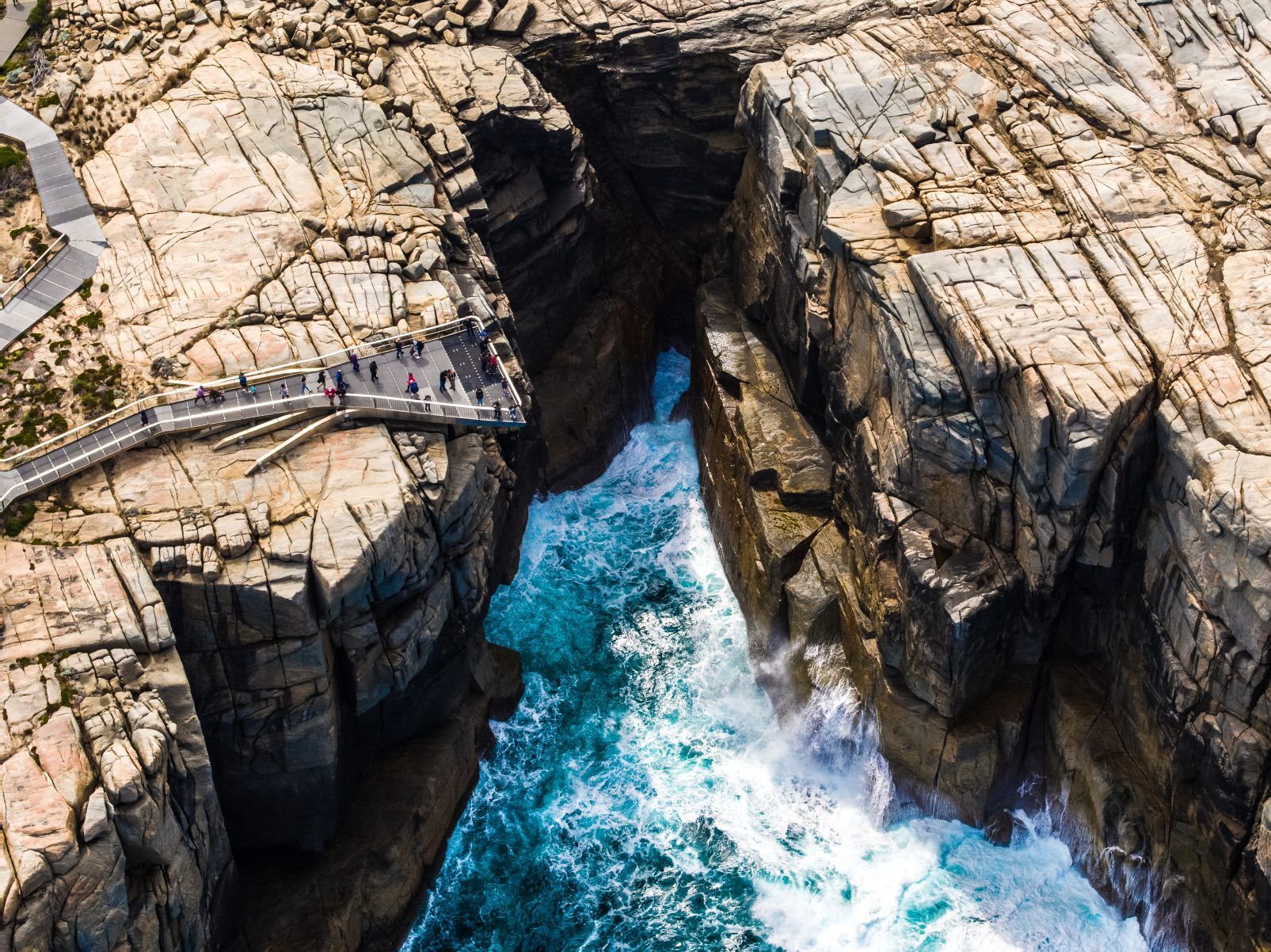




Recent Comments